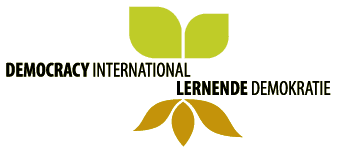Even though your group is united by the same passion and shared cause, sooner or later, human dynamics will come into play. Group dynamics always emerge when more than two people come together. Team development can often be painful, but it is full of learning opportunities and even essential for survival. This canvas helps you develop understanding for yourselves and your team – and its dynamics. You can identify internal and external conflicts, address them constructively in the future, or even prevent them. This is crucial because only if you function as a team can you produce good work and enjoy the process! With the help of this canvas, you can uncover blind spots and make team dynamics, conflicts, and emotions visible and transparent.
Caution! This canvas should be used empathetically and mindfully, not for assigning blame. While working on it, hidden conflicts, dynamics, and blind spots may surface, which can be uncomfortable and lead to tension. However, especially in the case of simmering conflicts, this process is necessary and can be healing. This tool is best suited for work in smaller groups or individually as preparation for potentially tense meetings.
Belonging: Inside/Outside: Who and what (values, etc.) belongs to the team? Who is not part of the team but plays a role as an external partner or relevant stakeholder? Who do we want (or not want) to include?
Proximity: Close/Distant: Am I liked and close to the core team, or am I involved but more on the periphery, less liked, or even an outsider?
Status: Top/Bottom: How hierarchical or non-hierarchical are we organized? What values are important to us as a team, and which are not? Who has authority? How open or hidden are these differences in status and power?
Relevance: Back/Front: Who sets the direction? Who pushes forward, who slows down, and who lags behind? Is anyone at risk of being left behind? And where do we want to develop as a team?
These four positioning questions are the root of most emotions, tensions, and conflicts in groups, organizations, and communities. None of these questions are neutral: we all prefer to be inside rather than outside, close rather than distant, on top rather than at the bottom, and at the front rather than at the back – even if we sometimes pretend otherwise. Despite this, the purpose of this canvas is to foster a relaxed approach to group dynamics and conflicts. After all, they are simply part of the process – and that’s a good thing!
You can find the German Canvas here.
You can find the English Canvas here.
You can find the Spanish Canvas here.

